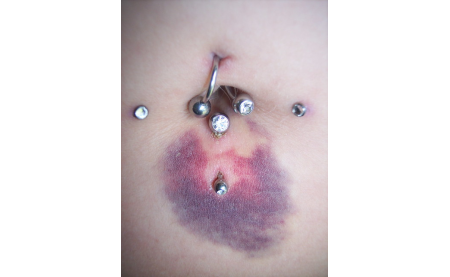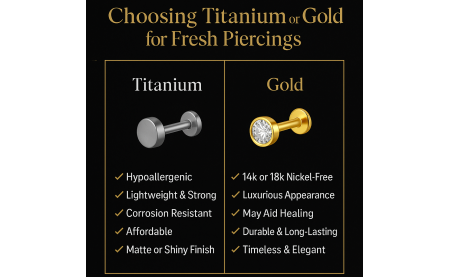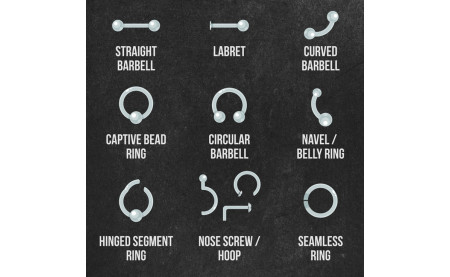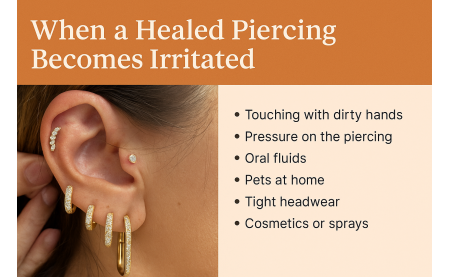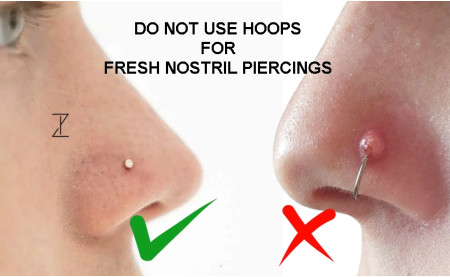Why Touching Your Piercing Is the Worst Thing You Can Do

Introduction
One of the most common—and damaging—habits we see in clients is touching or playing with a fresh or healing piercing. While it may seem harmless to adjust, twist, or check your jewelry, this simple act can create serious complications that can delay healing, cause infections, or even lead to piercing loss.
At Piercing Zone Dubai, we educate every client about why hands-off is the golden rule. Let’s dive into the science and real-life consequences behind this advice.
The Science of Touch & Contamination
Our hands are among the most contaminated parts of the body. Even after washing, they can harbor:
- Bacteria (e.g., Staphylococcus aureus, Pseudomonas aeruginosa)
- Fungi (e.g., Candida albicans)
- Viruses (e.g., Herpes simplex, common cold viruses)
- Environmental debris (dirt, oils, dust, cosmetic residue)
When you touch your piercing:
- Pathogens transfer from your skin to the piercing wound.
- The jewelry acts like a foreign body, giving bacteria an ideal surface to adhere to (biofilm formation).
- The skin’s natural barrier is already compromised during healing—making it easier for microbes to enter.
Medical Risks of Touching Your Piercing
1. Localized Infection
Even minor contact can introduce enough bacteria to overwhelm the immune system’s defenses in the piercing tract. Signs include redness, swelling, pain, heat, and pus.
2. Abscess Formation
If infection becomes trapped under the skin, an abscess (a pocket of pus) may form, requiring medical drainage.
3. Septicemia (Worst-Case Scenario)
In severe cases—especially if the immune system is compromised—bacteria from an infected piercing can enter the bloodstream, leading to sepsis, a life-threatening condition.
Mechanical Trauma: The Other Danger
Even if your hands are perfectly clean, playing with jewelry can cause:
- Microtears in the piercing channel (tiny tissue injuries)
- Prolonged inflammation due to repetitive movement
- Scar tissue formation and hypertrophic scars
- Piercing migration or rejection from repeated mechanical stress
The wound healing process—hemostasis → inflammation → proliferation → remodeling—is disrupted every time the piercing is moved unnecessarily.
Common Client Mistakes & Their Consequences
| Habit | Medical Consequence |
|---|---|
| Twisting the jewelry | Breaks healing tissue, extends healing time |
| Checking for tightness | Pushes bacteria into the tract |
| Removing to “clean” | Collapses the channel, traps bacteria |
| Playing while bored/anxious | Causes chronic irritation, bumps, and migration |
Worst-Case Scenarios from Touching
- Cartilage Collapse – In ear piercings, repeated trauma can weaken cartilage structure.
- Permanent Scarring – Keloids or hypertrophic scars that remain even after jewelry removal.
- Complete Piercing Loss – Channel closes from repeated damage or rejection.
- Osteomyelitis – Rare but serious bone infection from untreated bacterial spread in facial piercings.
- Facial Cellulitis – Rapidly spreading skin infection that may require IV antibiotics.
How to Protect Your Piercing
- Hands Off: Only touch during aftercare cleaning—and only with washed hands.
- No Twisting or Rotating: Modern piercing techniques don’t require jewelry movement during healing.
- Follow Aftercare Instructions: Use sterile saline solution twice daily; avoid alcohol or harsh chemicals.
- Avoid Secondary Irritants: Hair products, makeup, perfumes, and unwashed pillowcases can all transfer contaminants.
Professional Advice from Piercing Zone Dubai
We use only implant-grade titanium and solid gold jewelry to minimize allergic reactions and biofilm buildup, but material quality cannot protect against contamination from your hands.
Touching is the fastest way to turn a perfect piercing into a painful, infected, or rejected one. In severe cases, it can lead to medical emergencies requiring hospital care.
Your piercing is a fresh wound—treat it with the same caution you would any surgical incision.
Closing Line
“The most beautiful piercings are the ones that heal without problems—and the easiest way to make that happen is to keep your hands off.”


